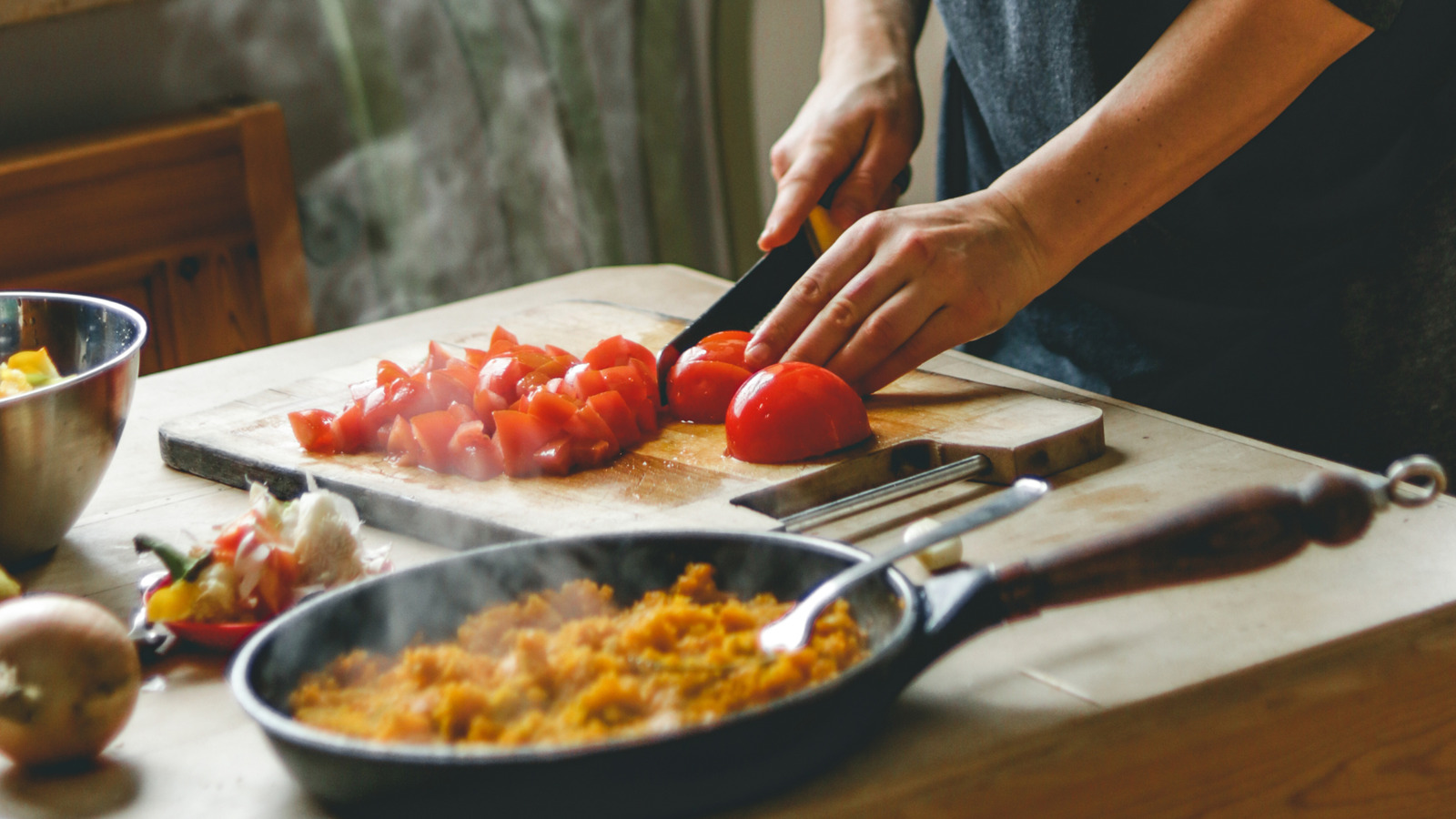According to the FDA, as of 2025, foodies in the U.S. waste an estimated 30%-40% of the total food supply (yikes). That also means that the water, energy, and labor required to produce this food gets wasted too. As an antidote to this unflattering statistic, the centuries-old Italian cooking philosophy of cucina povera can help households save money and take predictable weeknight dinners to the next level.
The foundation of cucina povera follows a fairly straightforward formula. A simple carb-forward base like pasta, polenta, or bread is paired with whatever produce happens to be in-season at the time. This no-frills, high-intrigue culinary tradition is all about shortening your ingredients list and minimizing food waste with imagination and resourcefulness. Reliance on affordable, nutritional ingredients like stale bread, legumes, olive oil, seasonal vegetables, and local cheeses has birthed such restaurant-worthy Italian dishes as pasta e fagioli, puttanesca, panzanella, bruschetta, and biscotti.
“Cucina povera” translates to “the kitchen of the poor” or “poor cuisine” in Italian. It comes from a long history of home cooks in Italy’s low-income rural population, specifically hailing from the regions of Tuscany, Puglia, and Campania. Necessity may be the mother of invention after all, as these innovative foodies developed ways to get the most out of their ingredients, helping each element of the dish shine to its fullest potential with slow simmering and other cooking techniques.
Classic cucina povera dishes encourage creativity
Cucina povera is also characterized by an emphasis on seasoning with herbs and drawing out the deeper natural flavors of vegetables, sans salt. This was originally a function of necessity due to the exorbitant cost of salt during the Middle Ages. Nowadays, the result of this intergenerational ingenuity is a sensory smorgasbord — think aromatic garlic and rosemary sauteed in olive oil or fresh basil leaves topping a raw salad with toasted golden breadcrumbs.
Due to the fact that meat wasn’t always widely available, cucina povera is a historically vegetarian cooking style. Ribollita soup with stale bread is a prime example of the tradition’s ability to make dishes meatless yet hearty, using up stale bread, kale, potatoes, white beans, carrots, onions, and any other veggie scraps lying around.
When meat was used, home cooks were typically transforming cheaper, less popular cuts like offal (which has been having a moment in the modern fine dining scene thanks to the likes of Marcus Samuelsson centuries later). Hailing from Florence, Lampredotto is a meaty sandwich made from the fourth stomach of a cow dressed with capers. Zoom over to Tuscany, and crostini di milza is a classic regional dish of Montepulciano, combining beef or veal spleen and chicken liver spread on crusty bread for a rustic pâté. In fact, Italian prosciutto was first cured and seasoned as a method of extending its shelf life, and now it fetches a fairly steep price tag in the artisanal charcuterie sections of grocery stores.
Ways to incorporate cucina povera ideology into your kitchen
The thrifty framework of cucina povera has inspired classic Italian dishes from rustic soups like minestrone to Michelin-worthy pasta dishes like Napoli’s mista corta. It’s a philosophy interwoven into Italian cultural heritage as well as a guidebook for modern foodies looking to weave some budget-friendly sustainability into their everyday cooking game.
For starters, consider starting a stock bag. Just grab a durable, resealable freezer bag and fill it with all of your leftover veggie odds and ends after preparing a meal. Miscellaneous carrot tops, ginger knobs, celery leaves, onion skins, and vegetable peels of all sorts can get tossed in the bag and stashed in the freezer. When the bag is full, simply dump the contents into a large pot of hot water to turn them into a dimensional, 100% free veggie stock. If you have any fresh herbs that are about to go bad, leave these out of the stock bag and instead turn them into a flavorful pesto or an infused olive oil for dressing pastas and soups.
Don’t be afraid to go a little out-of-the-box with your recipe experimentation. In Tuscan aquacotta (aka “cooked water”) soup, a whole slab of stale bread is not only used up, it’s made the star of the show. On the nutritional side, eating seasonal, local ingredients is also a healthy way to boost your diet and encourage opportunities for community connection and “cultivating” a green thumb with home gardening.






